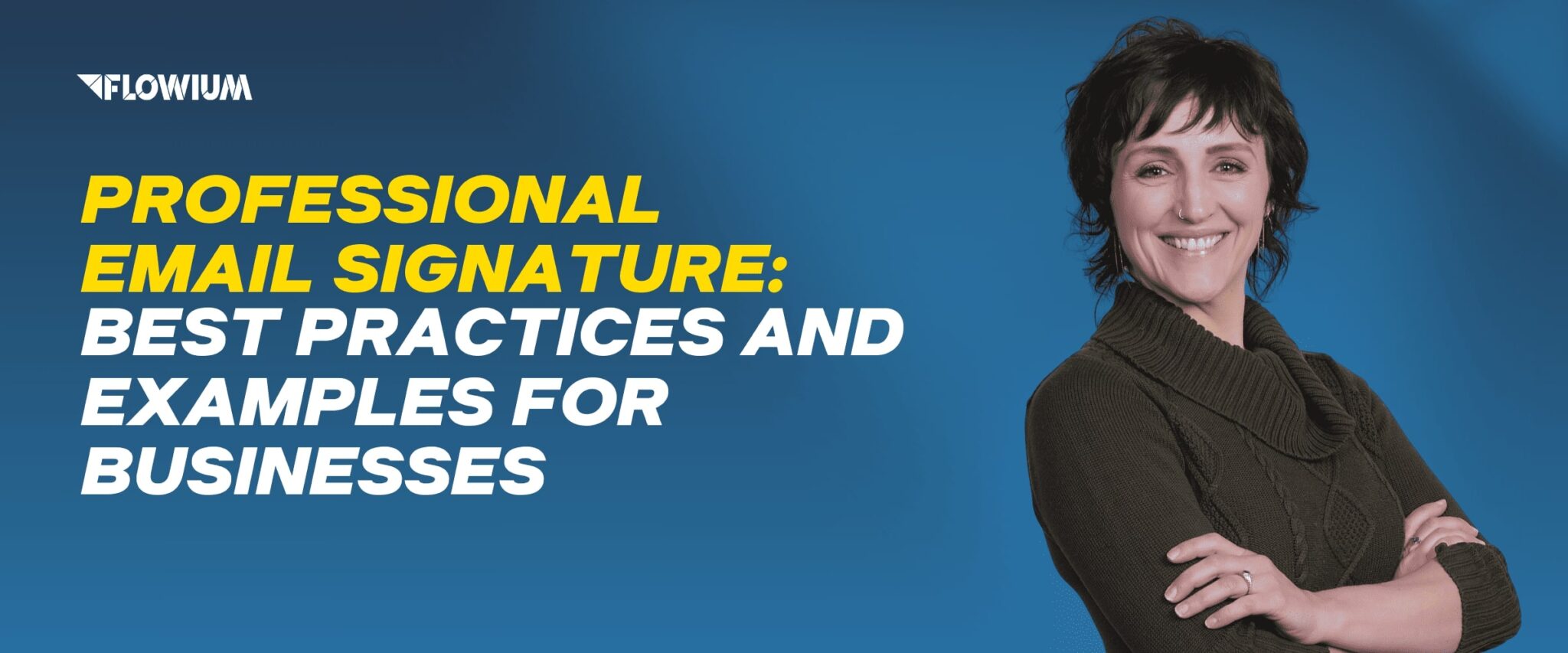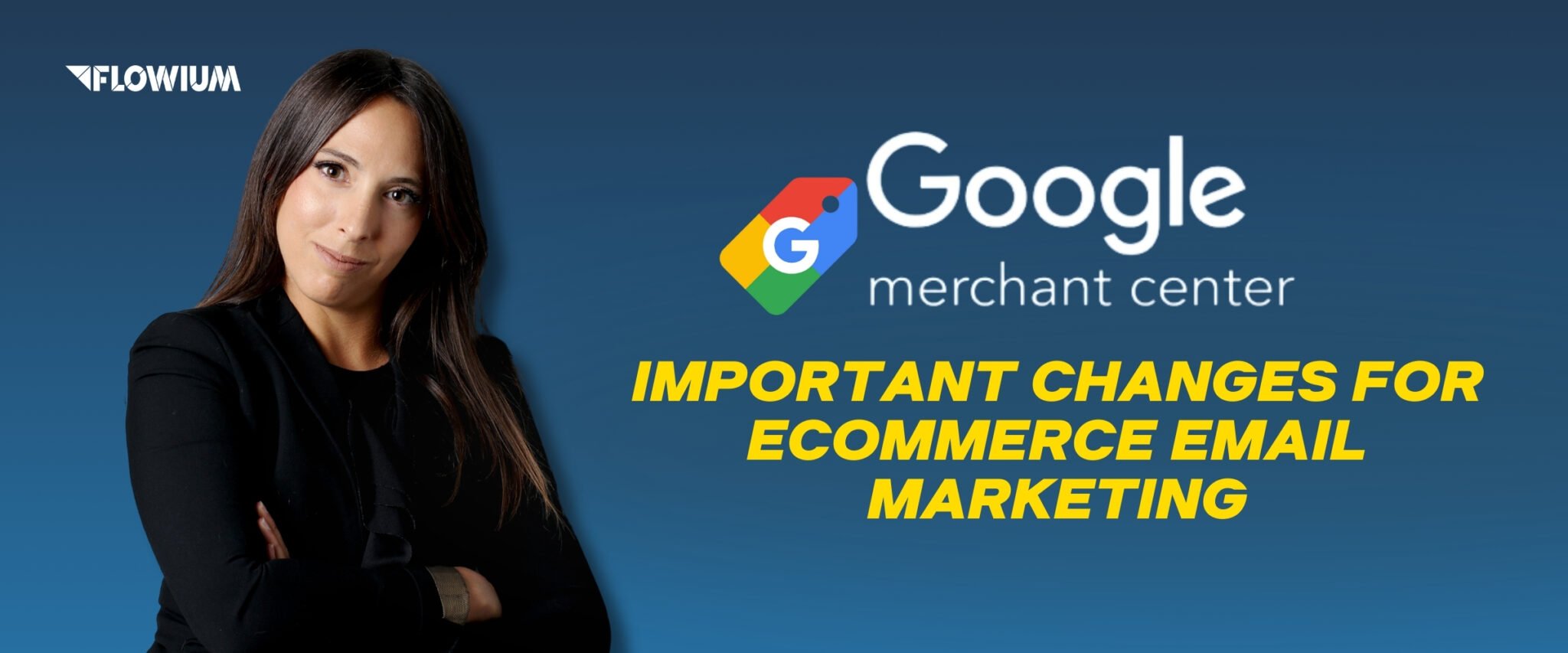A high-quality professional email signature is a finishing touch to your promotional email to leave a lasting impression about your brand. It’s like a cherry on top of the cake that adds to the integrity and reliability of your business reputation. However, not everyone knows how to make one that would speak professionalism and express personality at the same time.
In this article, we’re going to figure out how to create a good email signature and what practices work the best for modern businesses.
What is an Email Signature?
First, let’s answer the question, “What is a professional email signature?”.
A work email signature is a block of text that appears at the end of an email and serves as a sort of business card containing essential information about the sender. The main purpose of it is to provide receivers with a clear ways to contact you and facilitate communication.
Great email signatures are meant to make a lasting impact. It’s an opportunity to include components like as your company logo, social network icons, and other important elements that represent your business or position as a professional.

What to Include in an Email Signature?
Since a professional signature for emails is intended to serve several purposes, it also consists of multiple elements that must be properly incorporated. If you don’t know what to put in an email signature, here’s a list from Flowium’s email marketing experts. We’ll explain and show these components with examples.
Full Name and Professional Info
Regardless of what you sign, an email or a direct mail, the first thing you put in the signature is your full name. This is a rule of thumb for business email signatures as well. Put it in the first few lines of the text so that readers will know right away who they are interacting with. If you would like, feel free to add your chosen pronouns next to your name.

Pro Tip: To make it stand out from the rest of the text, you can make it bold or use slightly bigger font.
To make your message seem more authoritative, the next thing you need to add is your professional information, which includes your position in the company or occupation, and the company itself. When readers see that the person who addresses them takes a serious position in the company as a specialist, they also take your email with more seriousness.
Contact Information
Another requirement for brand representatives is to show your contact details is through the business email signature. It’s essential to have all the methods to contact available for clients, so they can easily connect with you in the most convenient way. The listed contact information also adds to the trustworthiness of your email as it shows that you’re not a just a name on their screen but a real person that they can communicate with.
A typical email signature includes the following contact info:
- Phone number;
- Email address;
- Website;
- Physical location (usually company’s office location).
These details might differ depending on your line of work and the type of organization you’re employed at. For example, professionals working for B2B enterprises will associate their contact info with their place of work, while freelancers will provide their personal contacts that they use for communication with clients.

Photo or Logo
Answering the question “What should an email signature look like?”, we say that it should look like a noticeable and memorable business card. Visual elements are always easier to notice and memorize, so adding graphics and photo is a way to go about it. With colors and graphical elements like logo or animations, you can make your signature look in line with the general branding. On a psychological level, adding your brand-associated colors to every email makes it more recognizable and familiar for clients. Including your picture also helps to increase trustworthiness, making it feel more like genuine face-to-face conversation than a plain business correspondence.

Links to Social Media
Having social media linked is a requirement for every business if they want to have a proper email signature. Add icons of social media platforms you’re on and link your accounts to give email receivers more resources to know about you. Social networks like LinkedIn, Facebook, Instagram and others can serve as alternative ways to contact you if people don’t like to communicate through phone calls or email. They also are a great source of information for clients who want to explore your brand after receiving an email. Plus, many small businesses and individual professionals use accounts on social media platforms as the main channel for building online presence, if they don’t have a website.

Calls to Action (CTA)
Your professional email signature isn’t there to just passively exist, but also can bring clicks and engagement with your content. All you need to do to use it for promotions is to add an effective call-to-action button. You can place it right in the signature or add a promotional banner with brief information about your offer and then this button. This way, if readers decide to use the information from the signature to connect, you facilitate the work for them by making the clickable element obvious. A direct and clear call to action makes it more convenient as well.

Privacy Info Disclaimer
Email disclaimers are typically required by various firms for a variety of reasons, including confidentiality and contractual requirements. Though essential, they can frequently be drawn out and annoying if not done well. Keep your email disclaimers organized and understandable by positioning them beneath a dividing line, beneath the important content of your work email signature.

How to Make a Professional Email Signature
We’ll also share some more detailed recommendations on how to create a professional email signature. Here’s the collection of techniques that you should follow to ensure the effectiveness of your signature and its positive impression on your email list.
- Design in line with branding
Be consistent in your design to make it fit in the styling guidelines of your brand. This allows you to be more recognizable, as people receiving your messages will be able to easily associate with your business. So, even if they miss the sender’s name at the beginning and just scroll through your email, you’ll have the professional signature with colors and logo of your brand. In the email signature example below, you can see that the design colors are in line with the brand’s logo.

- Essential information only
“Short and sweet” is exactly what your work email signature is supposed to look like. You’ve already had an entire email above to express your thoughts and present offers, so adding any info other than contacts is a mistake. Apart from essential components that we described earlier, add no more than one short sentence. Otherwise, you might overload this block and confuse readers.

- Ensure mobile responsiveness
Since many subscribers open their emails on mobile devices, you need to make sure that your business email signature displays properly. If you don’t do it, your design, photo, and logo can show up stretched or compressed on phone screens. Optimize fonts and perform testing of this block for it to be visible and effective for mobile users.

- Make links trackable
Use Google Analytics to track the effectiveness of UTM tracking codes created to keep an eye on shared link activity. This lets you evaluate how much email signatures add to your overall branding plan. Maintaining the links helps keep them in line with changing needs and corporate goals.
- Use email signature generators
It’s ideal to write your email signature in HTML to make sure it appears the same on Gmail, Outlook, and Apple. Tools like HubSpot’s free email signature generator might assist in maintaining quality even if you are not proficient in coding. For an easy way to create professional signatures, there are alternatives like WiseStamp, Gimmio, MySignature, and Newoldstamp. One of the professional email signature examples that you see below was created as a template on WiseStamp.

Email Signature Best Practices from Flowium
There are also best practices for email signatures that we want to share, based on the vast experience of Flowium’s experts in email marketing. By using these hacks for designing, you’ll be able to create good email signatures for your business.
- Use no more than 2–3 colors
To create the best professional signatures, we recommend using no more than two or three colors. Don’t forget to align them with the branding of your business.

- Consider fonts
Use a professional, readable typeface such as Times New Roman, Calibri, or Arial. Maintain a font size of 10–12 points.
- Use correct size for graphics
Include your company’s logo, but make sure it doesn’t take up too much space or obscure the writing. For a cleaner look, utilize tiny icons rather than words when adding social media connections.
- Add a divider
To separate the signature from the email’s content, use a line or a small image.

- Opt for one CTA
You can add two calls to action, but from our experience, opting for one works better in the result. Add a single CTA that hits the main point you intended for your signature.

- Add international prefix to phone number
By adding international access codes to your contact number, you can improve accessibility for foreign contacts.
Final Thoughts
We hope this article helped you understand the importance of creating the best professional email signatures for business correspondence. You can create a memorable signature by considering the effect that your sign-off may have on recipients. Or, you can always entrust marketing professionals like Flowium with this task. Our experts will create a great business email signature as well as stunning email designs for your brand’s promotional campaigns to help you reach success.







